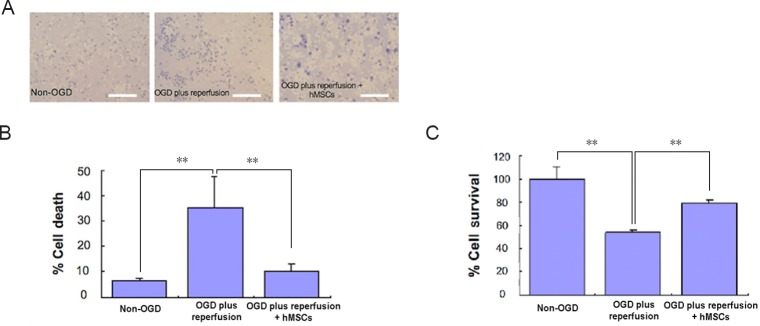Figure 2.
Cell death (Trypan Blue assay) and cell survival (MTT assay) in OGD model for cerebral ischemia involving primary mixed cultures of rat neurons and astrocytes.
(A) Images of cultures expressing dead cells (blue) in media. Scale bars: 50 µm. (B) Cultures without OGD treatment showed ~7% of cells died. Cell death increased significantly (P < 0.01) in a 90-minute OGD treatment followed by a 2-hour reperfusion (standard medium and normoxic conditions) period. When treated with hMSCs, OGD model plus reperfusion showed a decrease in cell death (P < 0.01). All experiments were conducted in triplicates. (C) Cells that did not receive OGD showed ~100% survival rate. However, cells showed a significant decrease after receiving a 90-minute OGD treatment followed by a 2-hour reperfusion (standard medium and normoxic conditions) period (P < 0.01). When treated with hMSCs, OGD model plus reperfusion showed an increased survival rate (P < 0.01). Data are expressed as the mean ± SD. **P < 0.01 (one-way analysis of variance followed by post hoc Fisher’s protected least significant difference). All experiments were conducted in triplicate. hMSCs: Human bone marrow mesenchymal stem cells; OGD: oxygen glucose deprivation; MTT: 3-(4,5-dimethylthianol-2-yl)-2,5 diphenyl tetrazolium bromide.

